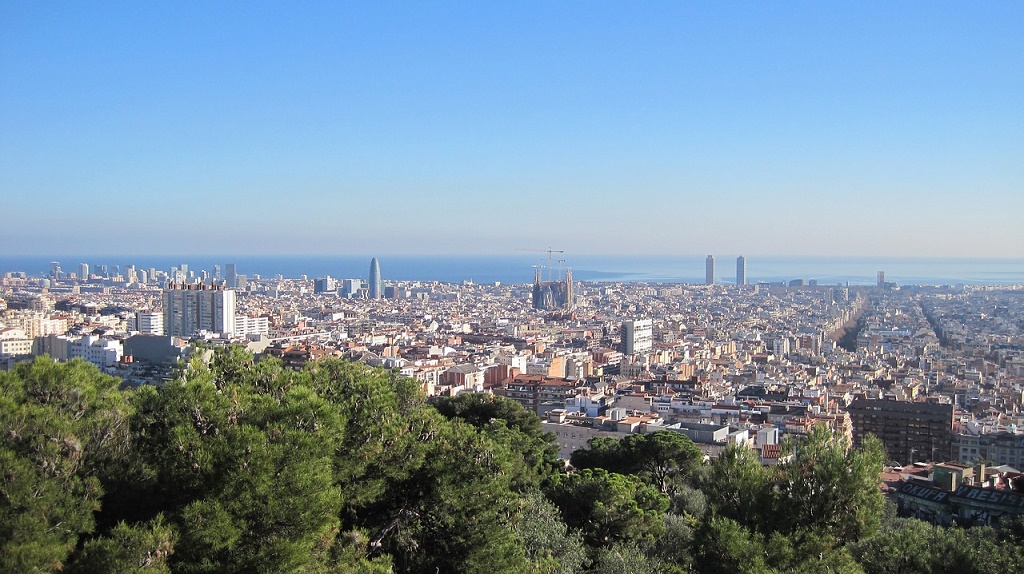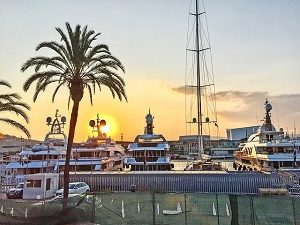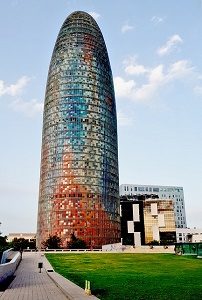

Photo via Pixabay
The district of Sant Martí is one of the most interesting districts in Barcelona. Sant Martí consists of ten neighbourhoods, and it is actually one of the largest districts in the Catalan capital. Some of Sant Martí’s neighbourhoods are very popular with tourists, like for instance the neighbourhoods of Poblenou, Vila Olímpica and Diagonal Mar i el Front Marítim.
Seafront promenades, beaches, modern and elegant areas with leisure options and fine restaurants with seafood and Mediterranean cuisine are Sant Martí’s main characteristics, but the district is much more than just that, so today, this article by ShBarcelona will share some of Sant Martí’s history with you.
Related article: Fiesta Mayor of Sant Martí


Photo via Pixabay
The district of Sant Martí was originally a large territory on the outskirts of Barcelona’s wall, and in the beginning it was hardly inhabited.
It stretched from the north to the Besòs river, and from the sea to Carmel mountain. What are now the neighbourhoods of Poblenou and Besòs used to be marshes, swamps and lagoons belonging to the Besòs river delta.
Little by little the coastlines were added to the neighbourhoods, and this has led to Sant Martí being what it is today, one of the largest neighbourhoods in Barcelona.
The Romans, who first inhabited the land, called the farmland near their settlements ager provincialis, and this land was meant for providing the city with food.


Photo via Pixabay
The construction of a Romanesque chapel, dedicated to Saint Martin of Tours, resulted in the current name of the district, Sant Martí de Provençals. They also marked a sagrera (holy and safe grounds) around the area, built some farmhouses and then a small town started to develop. For centuries this was the centre of Sant Martí.
With 221,029 inhabitants (2005), Sant Martí is the second most populated district in the city of Barcelona, it is fourth in area surface (10.8 km²), the second largest urban area and sixth in population density (20,466 inhabitants/km²).
The land is flat and flows towards Barcelona’s coastline. In the past there were rivers and streams coming down from the Collserola mountain range (Riera del Notari, Torrente de Milans, Torrente del Bogatell, Torrente de la Guineu, Riera de Horta…), and they led to street names and the names of parts of the district.
Related article: Bookstores in Sant Marti
Up until 2006 the district of Sant Martí had been divided into five areas: La Verneda (north), El Clot-Camp de l’Arpa (west), Fort Pius or Parc (because of its proximity to the Park de la Ciutadella) (south), El Pueblo Nuevo (in the centre and facing the sea) and El Besós y El Maresme (east).
Today the district consists of ten different neighbourhoods:
Do you live in Sant Martí? What is most interesting about this district?
Barcelona’s Mediterranean climate, with increasingly warmer and longer summers, makes air conditioning an essential feature…
Maybe you're thinking about selling a property or you've just inherited one or more real…
Do you enjoy strolling among trees and plants, away from the hustle and bustle of…
If you are planning to move to Barcelona for a few months or permanently, one…
ShBarcelona establishes itself as the leading agency within the Apialia Eixample Group, reaffirming its position…
Are you going to visit Barcelona this 2025? The vibrant Catalan capital once again becomes…